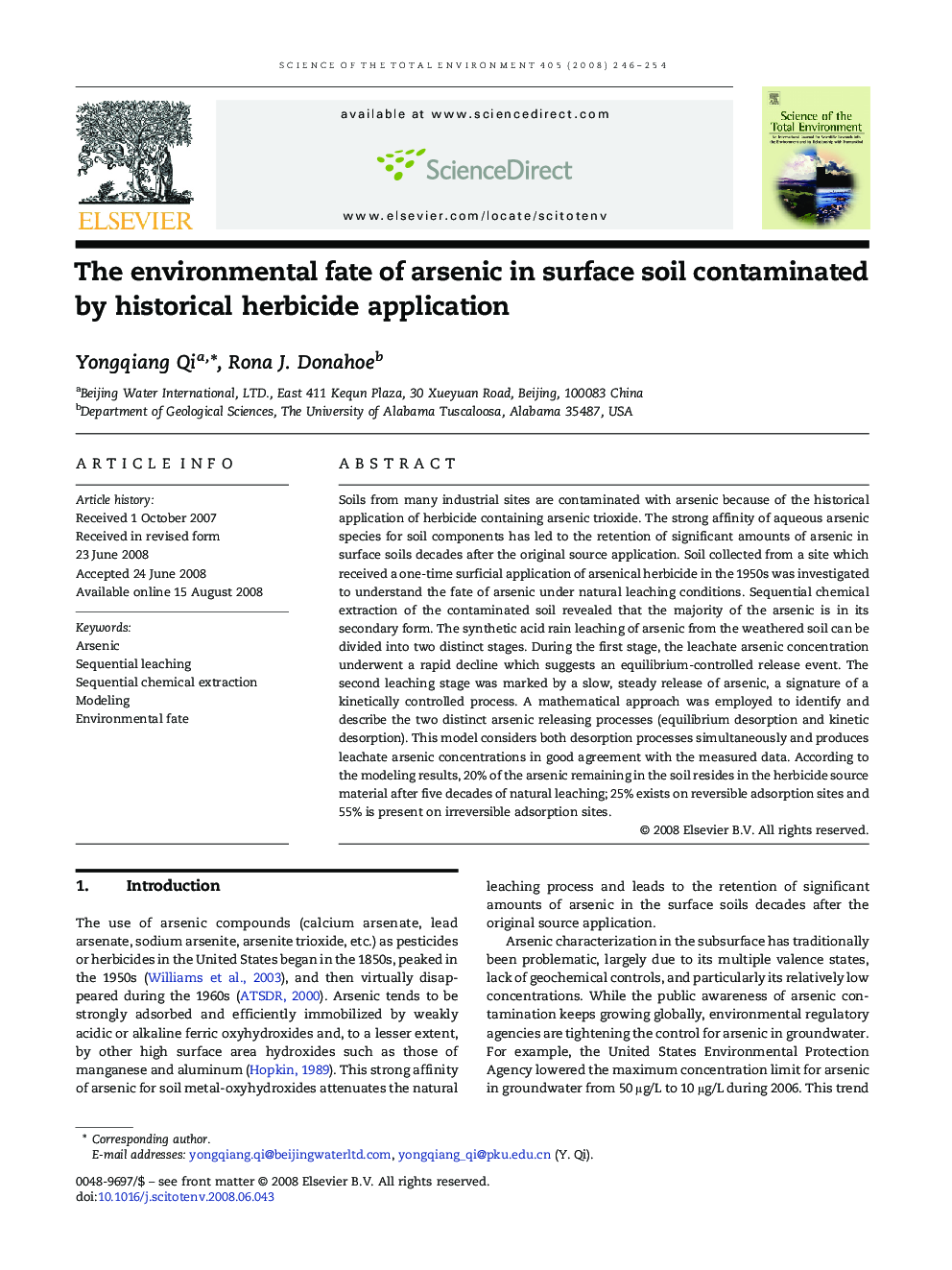| Article ID | Journal | Published Year | Pages | File Type |
|---|---|---|---|---|
| 4432026 | Science of The Total Environment | 2008 | 9 Pages |
Soils from many industrial sites are contaminated with arsenic because of the historical application of herbicide containing arsenic trioxide. The strong affinity of aqueous arsenic species for soil components has led to the retention of significant amounts of arsenic in surface soils decades after the original source application. Soil collected from a site which received a one-time surficial application of arsenical herbicide in the 1950s was investigated to understand the fate of arsenic under natural leaching conditions. Sequential chemical extraction of the contaminated soil revealed that the majority of the arsenic is in its secondary form. The synthetic acid rain leaching of arsenic from the weathered soil can be divided into two distinct stages. During the first stage, the leachate arsenic concentration underwent a rapid decline which suggests an equilibrium-controlled release event. The second leaching stage was marked by a slow, steady release of arsenic, a signature of a kinetically controlled process. A mathematical approach was employed to identify and describe the two distinct arsenic releasing processes (equilibrium desorption and kinetic desorption). This model considers both desorption processes simultaneously and produces leachate arsenic concentrations in good agreement with the measured data. According to the modeling results, 20% of the arsenic remaining in the soil resides in the herbicide source material after five decades of natural leaching; 25% exists on reversible adsorption sites and 55% is present on irreversible adsorption sites.
